SAFE Solutions
SAFE Solutions is a free, user-driven platform that serves as a functional collection of research, educational materials, and promising practices that can be tailored and support strategic response efforts to substance use disorders. The SAFE Solutions platform is beneficial in multiple ways, but particularly helps community leaders build capacity.
Search by OUTCOME

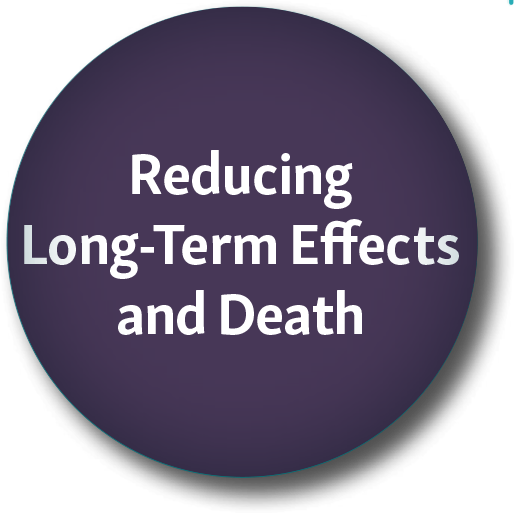
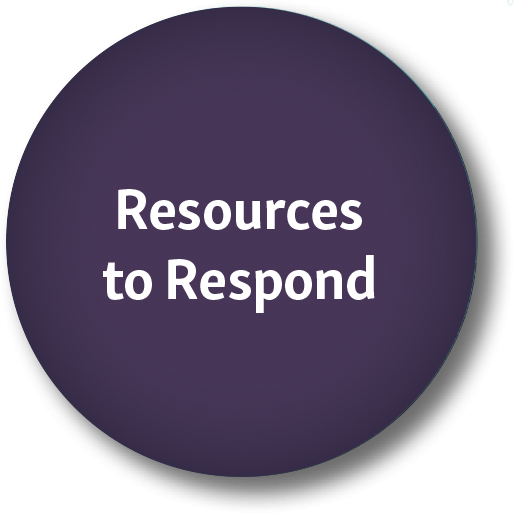
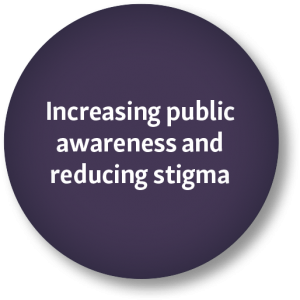

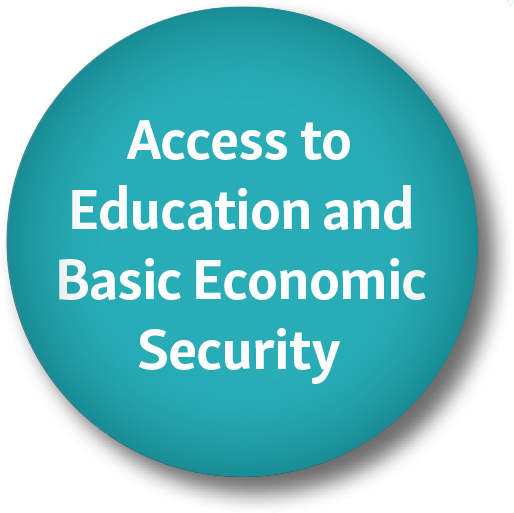
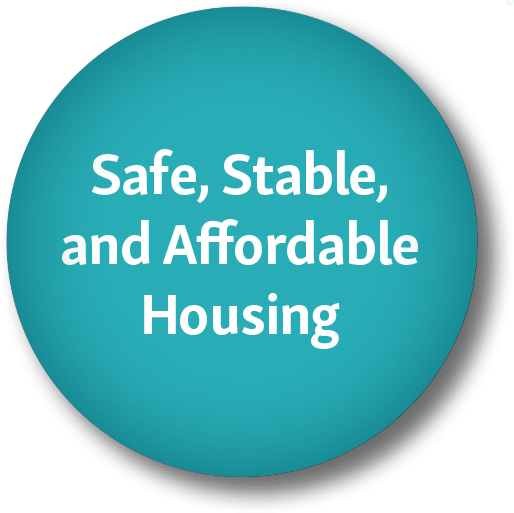
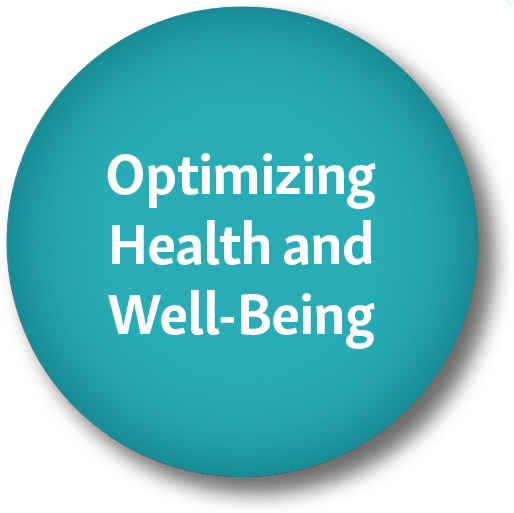
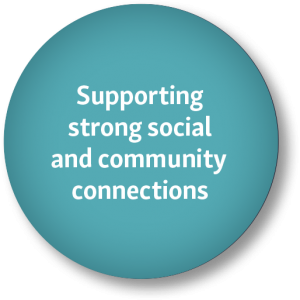
Search by CONTINUUM OF CARE






Strategies
I want to assist my community with: Reducing Injury, Morbidity, and Mortality
Prevention
Implementing Risk and Protective Factors for Individuals, Families, and Communities
- Improve Protective Factors to Reduce SUDs
- Expand Positive Recreation Opportunities
- Become a Trauma-Informed Community
- Improve Job Opportunities for At-Risk individuals
- Improve Detection and Treatment of Mental Health Conditions
Focus on Youth and Families
- Prevent First-Time Use through Education
- Empower Parents
- Educate Parents on the Risks of Prescription and Non-Prescription Drugs
- Expand School-Based Prevention Programs
- Expand and Improve Support for Youth Outreach and Leadership
Focus on Medical/Pharmaceutical Systems
- Educate Patients on the Risks of Prescription and Non-Prescription Drugs
- Improve and Expand Screening and Testing for Misuse and Dependency
- Improve Professional Training on Opioid Risk and Alternative Pain Management Approaches
- Expand and Enhance Chronic Pain Prevention and Management
- Increase Access to Non-Pharma Therapies
- Reduce Over-Prescription of Prescription Drugs
- Improve Prescribing Practices
- Expand and Enhance Prescription Drug Monitoring Program (PDMP)
Focus on Disrupting the Supply
Early Intervention
Expand Early Intervention Strategies
Harm Reduction
Focus on Strategies
- Expand Harm Reduction Practices
- Increase Access to Syringe Exchange Programs
- Expand Number of Safe Injection Sites
- Expand Access to Medicated Assisted Treatment/Recovery (MAT/MAR)
- Adopt Harm Reduction Practices in Jails and Prisons
- Improve Screening for Infectious Disease
- Increase Access to Overdose Reversal Medications
- Expand Drug Testing Options
Focus on Perinatal Period
- Minimize Substance Use During Pregnancy
- Increase Awareness of the Risks of Substance Use and Neonatal Abstinence Syndrome (NAS)
- Increase Awareness of Treatment, Recovery, and Support Services
- Improve Identification of Pregnant People at Risk
- Improve Identification and Data Collection for NAS
- Adopt Universal Screening for Pregnant People
- Expand Perinatal Treatment and Support for People with SUDs
- Increase Access to Contraception
- Reduce Stigma for Pregnant People with SUDs
- Expand Motivational Interviewing for Pregnant People
- Expand Access to MAT/MAR for Pregnant People
- Expand SBIRT in Maternity Care Clinics
- Improve Access to Recovery Coaches for Parents
- Improve Care for Babies Born Drug Dependent
- Enhance Collaboration Among Medical, Behavioral Health, and Social Services Providers
Treatment
Focus on Criminal Justice Involvement
- Shift from Punishment to Treatment Approach
- Expand Law Enforcement Assisted Diversion and Deflection Programs
- Expand First Response and Crisis Intervention Teams
- Expand and Enhance Speciality Courts
- Expand Community Service Alternatives to Incarceration
- Enhance Treatment and Recovery Support During Incarceration
- Expand the Use of MAT/MAR in Correctional Facilities
- Improve Recovery Support for People in the Criminal Justice System
- Improve Reentry After Incarceration
Focus on Medicated Assisted Treatment/Recovery (MAT/MAR)
- Expand Access to Medicated Assisted Treatment/Recovery (MAT/MAR)
- Accelerate the Development of New MAT/MAR Approaches
- Expand DNA Testing to Improve Precision MAT/MAR Therapies
- Expand the Use of MAT/MAR in Correctional Facilities
Focus on Effective Treatment
- Support and Advance Effective Treatment
- Improve Access to Quality Treatment Programs
- Improve and Expand Screening and Testing for Misuse and Dependency
- Strengthen Peer Recovery Support Services and Programs
- Improve Links to Treatment for People who Experience Non-Lethal Overdoses or Naloxone Revivals
Recovery
Focus on Recovery Supports
- Improve Community Recovery Supports
- Improve Tracking of Recovery Progress
- Create Recovery-Ready Communities
- Expand Community Support for Impacted Families
Focus on Recurrence/Relapse Prevention
I want to assist my community with: Resources to Respond
Prevention
Implementing Risk and Protective Factors for Individuals, Families, and Communities
- Improve Protective Factors to Reduce SUDs
- Become a Trauma-Informed Community
- Improve Detection and Treatment of Mental Health Conditions
Focus on Youth and Families
- Prevent First-Time Use through Education
- Expand and Improve Support for Youth Outreach and Leadership
Focus on Medical/Pharmaceutical Systems
- Increase Access to Non-Pharma Therapies
- Improve and Expand Screening and Testing for Misuse and Dependency
- Improve Professional Training on Opioid Risks and Alternative Pain Management Approaches
- Expand and Enhance Chronic Pain Prevention and Management
- Expand and Enhance Prescription Drug Monitoring Program (PDMP)
Focus on Disrupting the Supply
Early Intervention
Expand Early Intervention Strategies
Harm Reduction
Focus on Strategies
- Expand Harm Reduction Practices
- Increase Access to Syringe Exchange Programs
- Expand Number of Safe Injection Sites
- Improve Screening for Infectious Disease
- Expand Drug Testing Options
- Increase Access to Overdose Reversal Medications
Focus on Perinatal Period
- Minimize Substance Use During Pregnancy
- Improve Identification of Pregnant People at Risk
- Expand Motivational Interviewing for Pregnant People
- Expand Access to MAT/MAR for Pregnant People
- Expand SBIRT in Maternity Care Clinics
- Expand Perinatal Treatment and Support for People with SUDs
- Improve Identification and Data Collection for NAS
- Increase Awareness of Treatment, Recovery, and Support Services
- Enhance Collaboration Among Medical, Behavioral Health, and Social Service Providers
Treatment
Focus on Effective Treatment
- Improve Access to Quality Treatment Programs
- Support and Advance Effective Treatment
- Improve and Expand Screening and Testing for Misuse and Dependency
- Strengthen Peer Recovery Support Services and Programs
- Improve Links to Treatment for People Who Experience Non-Lethal Overdoses and Naloxone Revivals
Focus on Criminal Justice Involvement
- Expand Law Enforcement Assisted Diversion and Deflection Programs
- Expand First Response and Crisis Intervention Teams
- Expand and Enhance Specialty Courts
- Expand Community Service Alternatives to Incarceration
- Enhance Treatment and Recovery Support During Incarceration
Focus on Medicated Assisted Treatment/Recovery (MAT/MAR)
- Expand Access to Medicated Assisted Treatment/Recovery (MAT/MAR)
- Accelerate the Development of New MAT/MAR Approaches
- Expand DNA Testing to Improve Precision MAT/MAR Therapies
- Expand the Use of MAT/MAR in Correctional Facilities
- Improve Reentry After Incarceration
- Improve Recovery Support for People in the Criminal Justice System
Recovery
Focus on Recovery Supports
- Improve Community Recovery Supports
- Create Recovery-Ready Communities
- Improve Tracking of Recovery Progress
Focus on Recurrence/Relapse Prevention
- Improve Recovery Support for People in the Criminal Justice System
- Strengthen Peer Recovery Support Services and Programs
- Improve Recovery Housing
- Expand and Strengthen Recovery Schools and Collegiate Recovery Programs
- Improve Education, Job Training, and Employment for People in Recovery
- Expand Community Support for Impacted Families
I want to assist my community with: Reducing Stigma
Prevention
Implementing Risk and Protective Factors for Individuals, Families, and Communities
- Become a Trauma-Informed Community
- Improve Protective Factors to Reduce SUDs
- Empower Parents
- Improve Job Opportunities for At-Risk Individuals
- Improve Detection and Treatment for Mental Health Conditions
- Improve and Expand Screening and Testing for Misuse and Dependency
Focus on Youth and Families
- Prevent First Time Use Through Education
- Expand School Based Prevention Programs
- Expand and Improve Support for Youth Outreach and Leadership
Focus on Medical/Pharmaceutical Systems
- Educate Parents on the Risks of Prescription and Non-Prescription Drugs
- Educate Patients on the Risks of Prescription and Non-Prescription Drugs
- Expand Prescription Drug Take-Back and Disposal Programs
- Expand and Enhance Chronic Pain Prevention and Management
- Improve Professional Training on Opioids and Alternative Pain Management Approaches
Harm Reduction
Focus on Strategies
- Expand Harm Reduction Practices
- Increase Access to Syringe Exchange Programs
- Expand Access to Medicated Assisted Treatment/Recovery (MAT/MAR)
- Expand Number of Safe Injection Sites
- Adopt Harm Reduction Practices in Jails and Prisons
- Improve Screening for Infectious Disease
- Increase Access to Overdose Reversal Medications
Focus on Perinatal Period
- Minimize Substance Use During Pregnancy
- Improve Identification of Pregnant People At Risk
- Reduce Stigma for Pregnant People with SUDs
- Expand Access to MAT/MAR for Pregnant People
- Expand SBIRT in Maternity Care Clinics
- Expand Perinatal Treatment and Support
- Increase Awareness of the Risks of Substance Use and Neonatal Abstinence Syndrome (NAS)
Treatment
Focus on Criminal Justice Involvement
- Shift from Punishment to Treatment Approach
- Expand Law Enforcement Assisted Diversion and Deflection Programs
- Expand First Response and Crisis Intervention Teams
- Expand and Enhance Speciality Courts
- Strengthen Peer Recovery Support Services and Programs
- Enhance Treatment and Recovery Support During Incarceration
Focus on Medicated Assisted Treatment/Recovery (MAT/MAR)
- Expand the Use of MAT/MAR in Correctional Facilities
- Improve Reentry After Incarceration
- Improve Recovery Support for People in the Criminal Justice System
- Expand Access to MAT/MAR for Pregnant People
- Accelerate the Development of New Approaches
- Improve and Expand Screening and Testing for Misuse and Dependency
Focus on Effective Treatment
Recovery
- Improve Recovery Support for People in the Criminal Justice System
- Improve Recovery Housing
- Expand and Strengthen Recovery Schools and Collegiate Recovery Programs
- Improve Education, Job Training, and Employment for People in Recovery
- Create Recovery-Ready Communities
- Improve Tracking of Recovery Progress
- Expand Community Support for Impacted Families
- Strengthen Peer Recovery Support Services and Programs
I want to assist individuals with: Access to Education and Basic Economic Security
Prevention
Implementing Risk and Protective Factors for Individuals, Families, and Communities
- Improve Protective Factors to Reduce SUDs
- Improve Job Opportunities for At-Risk Individuals
- Become a Trauma-Informed Community
Focus on Youth and Families
Focus on Medical/Pharmaceutical Systems
- Improve and Expand Screening and Testing for Misuse and Dependency
- Educate Patients on the Risk of Prescription and Non-Prescription Drugs
- Improve Professional Training on Opioid Risks and Alternative Pain Management Approaches
Focus on Disrupting the Supply
Treatment
Focus on Criminal Justice Involvement
- Shift from Punishment to Treatment Approach
- Expand Law Enforcement Assisted Diversion and Deflection Programs
- Expand Community Service Alternatives to Incarceration
- Expand and Enhance Speciality Courts
- Expand the Use of MAT/MAR in Correctional Facilities
- Enhance Treatment and Recovery Support During Incarceration
- Improve Reentry After Incarceration
Focus on Effective Treatment
Recovery
Focus on Recovery Supports
- Create Recovery-Ready Communities
- Improve Recovery Support for People in the Criminal Justice System
- Improve Tracking of Recovery Progress
- Strengthen Peer Recovery Support Services and Programs
Focus on Recurrence/Relapse Prevention
I want to assist individuals with: Safe, Stable, and Affordable Housing
Harm Reduction
- Minimize Substance Use During Pregnancy
- Improve Identification of Pregnant People at Risk
- Expand Access to MAT/MAR for Pregnant People
- Expand Perinatal Treatment and Support for People with SUDs
- Increase Awareness of Treatment, Recovery, and Support Services
- Expand Access to Medicated Assisted Treatment/Recovery (MAT/MAR)
- Adopt Harm Reduction Practices in Jails and Prisons
Treatment
Focus on Criminal Justice Involvement
- Shift from Punishment to Treatment Approach
- Improve Reentry After Incarceration
- Expand Law Enforcement Assisted Diversion and Deflection Programs
- Expand Community Service Alternatives to Incarceration
- Expand and Enhance Speciality Courts
- Improve Reentry After Incarceration
- Enhance Treatment and Recovery Support During Incarceration
Focus on Medicated Assisted Treatment/Recovery (MAT/MAR)
- Expand the Use of MAT/MAR in Correctional Facilities
- Improve Links to Treatment for People who Experience Non-Lethal Overdoses or Naloxone Revivals
Focus on Effective Treatment
Recovery
- Expand and Strengthen Recovery Schools and Collegiate Recovery Programs
- Improve Education, Job Training, and Employment for People in Recovery
- Improve Recovery Housing
- Improve Recovery Support for People in the Criminal Justice System
- Strengthen Peer Recovery Support Services and Programs
- Improve Tracking of Recovery Progress
- Create Recovery-Ready Communities
I want to assist individuals with: Optimizing Health and Well-Being
Prevention
Implementing Risk and Protective Factors for Individuals, Families, and Communities
Focus on Youth and Families
- Expand and Improve Support for Youth Outreach and Leadership
- Prevent First Time Use Through Education
- Expand School-Based Prevention Programs
- Expand Positive Recreation Opportunities
Focus on Medical/Pharmaceutical Systems
- Improve Professional Training on Opioids and Alternative Pain Management Approaches
- Improve Prescribing Practices
- Increase Access to Non-Pharma Therapies
- Expand and Enhance Chronic Pain Prevention and Management
- Improve Detection and Treatment of Mental Health Conditions
Focus on Disrupting the Supply
Harm Reduction
Focus on Strategies
- Expand Harm Reduction Practices
- Increase Access to Syringe Exchanges
- Expand Access to Medicated Assisted Treatment/Recovery (MAT/MAR)
- Expand Number of Safe Injection Sites
- Adopt Harm Reduction Practices in Jails and Prisons
- Expand Drug Testing Options
- Increase Access to Overdose Reversal Medications
- Improve Screening for Infectious Disease
Focus on Perinatal Period
- Minimize Substance Use During Pregnancy
- Improve Identification of Pregnant People at Risk
- Increase Access to Contraception
- Reduce Stigma for Pregnant People with SUDs
- Expand Motivational Interviewing for Pregnant People
- Expand Access to MAT/MAR for Pregnant People
- Adopt Universal Screening for Pregnant People
- Expand SBIRT in Maternity Care Clinics
- Expand Perinatal Treatment and Support for People with SUDs
- Improve Access to Recovery Coaches for Parents
- Improve Care for Babies Born Drug Dependent
- Increase Awareness of the Risks of Substance Use and Neonatal Abstinence Syndrome (NAS)
- Improve Identification and Data Collection for NAS
- Increase Awareness of Treatment, Recovery, and Support Services
- Enhance Collaboration Among Medical, Behavioral Health, and Social Service Providers
Treatment
Focus on Criminal Justice Involvement
- Shift from Punishment to Treatment Approach
- Expand Law Enforcement Assisted Diversion and Deflection Programs
- Expand First Response and Crisis Intervention Teams
- Expand and Enhance Speciality Courts
- Enhance Treatment and Recovery Support During Incarceration
- Improve Reentry After Incarceration
- Improve Recovery Support for People in the Criminal Justice System
Focus on Medicated Assisted Treatment/Recovery (MAT/MAR)
- Expand the Use of MAT/MAR in Correctional Facilities
- Expand DNA Testing to Improve Precision MAT/MAR Therapies
- Expand Access to MAT/MAR for Pregnant People
- Accelerate the Development of New Approaches
Focus on Effective Treatment
- Support and Advance Effective Treatment
- Improve and Expand Screening and Testing for Misuse and Dependency
- Improve Access to Quality Treatment Programs
- Improve Links to Treatment for People Who Experience Non-Lethal Overdoses or Naloxone Revivals
- Strengthen Peer Recovery Support Services and Programs
Recovery
Focus on Recovery Supports
- Improve Tracking of Recovery Progress
- Expand and Strengthen Recovery Schools and Collegiate Recovery Programs
- Improve Education, Job Training, and Employment for People in Recovery
- Improve Recovery Housing
- Expand Community Support for Impacted Families
Focus on Recurrence/Relapse Prevention
I want to assist individuals with: Creating Strong Social and Community Connections
Prevention
Implementing Risk and Protective Factors for Individuals, Families, and Communities
- Improve Protective Factors to Reduce SUDs
- Expand Positive Recreation Opportunities
- Become a Trauma-Informed Community
- Improve Job Opportunities for At-Risk Individuals
Focus on Youth and Families
- Prevent First Time Use Through Education
- Educate Parents on the Risk of Prescription and Non-Prescription Drugs
- Expand and Improve Support for Youth Outreach and Leadership
Focus on Medical/Pharmaceutical Systems
Harm Reduction
- Expand Harm Reduction Practices
- Expand Perinatal Treatment and Support for People with SUDs
- Improve Access to Recovery Coaches for Parents
- Improve Identification of Pregnant People at Risk
- Increase Awareness of Treatment, Recovery, and Support Services
- Enhance Collaboration Among Medical, Behavioral Health, and Social Service Providers
Treatment
Focus on Criminal Justice Involvement
- Shift from Punishment to Treatment Approach
- Expand Law Enforcement Assisted Diversion and Deflection Programs
- Expand First Response and Crisis Intervention Teams
- Expand and Enhance Speciality Courts
- Expand Community Service Alternatives to Incarceration
- Improve Reentry After Incarceration
- Improve Recovery Support for People in the Criminal Justice System
Focus on Effective Treatment
Recovery
- Create Recovery-Ready Communities
- Improve Recovery Support for People in the Criminal Justice System
- Strengthen Peer Recovery Support Services and Programs
- Improve Recovery Housing
- Expand and Strengthen Recovery Schools and Collegiate Recovery Programs
- Expand Community Support for Impacted Families
- Improve Education, Job Training, and Employment for People in Recovery
Prevention
The field of prevention emphasizes factors that contribute to one's overall health and wellbeing, aiming to promote health development and prevent problems before they occur. It is a multidisciplinary field developing strategies that prevent or reduce occurance, severity, or negative outcomes of disease, substance use, violence, injury, and mental illness. Prevention strategies can be addressed at various levels - individual, family, and community. Learn more about prevention strategies in our overview article, or continue to the specific wiki articles linked below.
Focus on Medical & Pharmaceutical Systems
- Increase Access to Contraception
- Reduce Over-Prescription of Prescription Drugs
- Educate Patients on the Risks of Prescription and Non-Prescription Drugs
- Improve Professional Training on Opioid Risk and Alternative Pain Management Approaches
- Expand and Enhance Chronic Pain Prevention and Management
- Expand and Enhance Prescription Drug Monitoring Programs (PDMPs)
Early Intervention
Early intervention is not a strategy listed on the Institute of Medicine’s (IOM) Continuum of Care; however, it edges between prevention and treatment and is often used in both areas of service. In the IOM prevention category, early intervention is focused on indicated populations — those who have initiated some form of substance use. Learn more about early intervention strategies in our overview article, or continue to the specific wiki articles linked below.
Early Intervention Strategies
- Expand Early Intervention Strategies
- Expand SBIRT Program
- Improve and Expand Screening and Testing for Opioid Misuse and Dependency
- Expand Motivational Interviewing
- Expand Law Enforcement and First Responder Assisted Diversion
- Expand Community Service Alternatives to Incarceration
- Adopt Universal Screening for Pregnant People
- Improve Identification and Data Collection for NAS
Harm Reduction
Harm reduction is a strategy which minimizes the impacts of drug use and drug-related harms. Harm reduction supports interventions which are aimed at reducing negative effects without necessarily completely extinguishing potentially harmful behaviors. In a substance use disorder setting, harm reduction seeks to keep individuals alive while minimizing negative health impacts that can result from active substance use. It is not the primary goal of harm reduction strategies to get someone into treatment and recovery. Learn more about harm reduction strategies in our overview article, or continue to the specific wiki articles linked below.
Harm Reduction Strategies
- Expand Harm Reduction Practices
- Increase Access to Naloxone
- Expand Drug Testing Options
- The Linkage Between Syringe Use and Infectious Disease
- Increase Access to Syringe Services Programs
- Expand Number of Safe Injection Sites
- Adopt Harm Reduction Practices in Jails and Prisons
- Minimize Substance Use During Pregnancy
Treatment
Treatment services for individuals with a substance use disorder diagnosis include assessment, the development of a treatment plan, implementation of the treatment plan, evaluation, case management, extended care, and monitoring. Programs vary in length and intensity, and they may include approaches like medical stabilization/detox, counseling and behavioral healthcare, and rehabilitation services. In treatment, the ASAM Criteria (American Society Of Addiction Medicine) is the most widely used and comprehensive set of standards for placement, continuation of services, and determining levels of care for individuals seeking treatment for substance use disorder. Level of care recommendations and treatment plans are developed based on multidimensional patient assessments that consider the patient’s medical, psychological, and social needs to help determine what services are a best fit to meet individual and/or patient needs. Additionally, when utilizing ASAM criteria, these guideline assessments take into account an individual's strengths, needs, resources, and recovery capital. Learn more about treatment strategies in our overview article, or continue to the specific wiki articles linked below.
Focus on Effective Treatment
- Support and Advance Effective Treatment
- Improve Links to Treatment for People who Experience Non-Lethal Overdoses or Naloxone Revivals
- The Role of Treatment Providers in Promoting Early Intervention, Harm Reduction, And Recovery
- Enhance Collaboration of Providers Using a Family-Centered Approach
- Expand and Enhance Speciality Courts
- Shift from Punishment to Treatment in the Criminal Justice System
- Expand Perinatal Treatment and Support for People with SUDs
- Improve Care for Babies Born Drug Dependent
Recovery
The Substance Abuse and Mental Health Services Administration (SAMHSA) states, "Recovery is a process of change through which individuals improve their health and wellness, live a self-directed life, and strive to reach their full potential." This definition is widely applicable since it does not mention the cessation of substance use. For many individuals in recovery, the term is not built solely on the alcohol, tobacco, and other drugs' (ATOD) termination of use. This is where harm reduction strategies or medicated assisted recovery can intersect. Recovery is a complete change in thought, behaviors, identity, and for some, a change in social circles. It is crucial for non-recovery individuals to understand that this shift can be transformative. Individuals who have experienced this transformation will tend to incorporate their recovery pathway into their identity. Moreover, that recovery path consistently changes — it is an evolutionary journey. Learn more about recovery strategies in our overview article, or continue to the specific wiki articles linked below.
System Building
While not part of the traditional Institute of Medicine’s (IOM) Continuum of Care model, systems building strategies allow community leaders to build big picture vision, address underlying values,and change the source of conditions. This may include strategies that support your broader work, such as building public awareness and momentum around your movement, broadening and engaging your coalition, supporting advocacy efforts, applying data performance approaches, and leading policy change. The themes addressed below are tightly linked to issues addressed across the full spectrum of the IOM Continuum of Care, and the reader is strongly encouraged to read the overview articles in each of the other five SAFE Solutions menus (prevention, early intervention, treatment, harm reduction, and recovery). Learn more about system building strategies in our overview article, or continue to the specific wiki articles linked below.
Cross Cutting Strategies
- Apply a Health Equity Lens
- Intersectionality and Addressing Disparities
- Mobilize Community Champions
- Advocate for Policy Change
- Understand Funding and Identify Your Resources
- Build Awareness and Education
- Reduce Stigma





